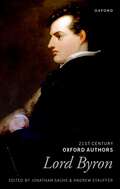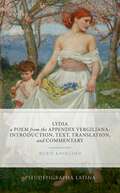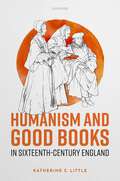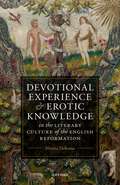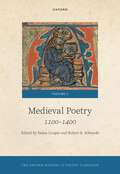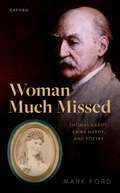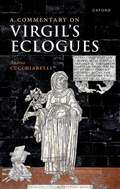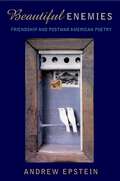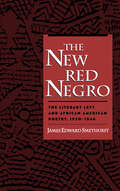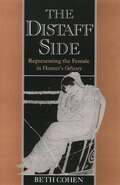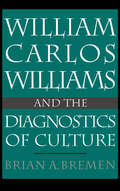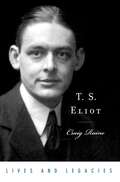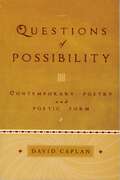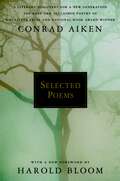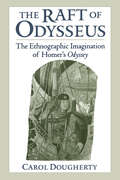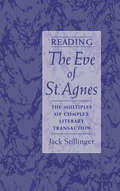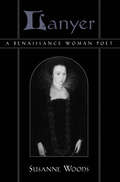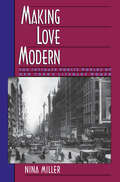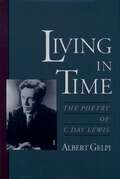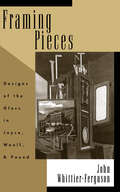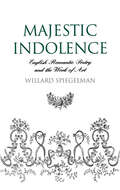- Table View
- List View
Lord Byron: Selected Writings (21st-Century Oxford Authors)
This volume in the 21st Century Oxford Authors series offers readers a generous selection of the poetry upon which Byron's fame depended and his reputation now rests. It presents the poems in the chronological order in which they were published, working in almost every case from their first appearances in print. The Selected Writings include the entirety of Byron's two best-known works, Childe Harold's Pilgrimage and Don Juan, but the decision to work book-by-book means that they are presented not as unified works but as evolving serial publications, interspersed with other works published between installments or sequels. Alongside these two major works, wider representation is given to Byron's lyric poetry than has been typical in modern editions. Furthermore, in keeping with the 21st Century Oxford Authors series, the works are reproduced in something close to their original printed forms. Prioritizing the event of publication over that of composition, this volume offers a version of Byron close to how he would have been known to his original public. With extensive annotations, it emphasizes the social processes by which literary works come to exist in the world, particularly their publication and reception histories. The result is a fresh view of Byron's literary achievement and an impetus to further reading in the works of this extraordinary creative figure.
Lydia, a Poem from the Appendix Vergiliana: Introduction, Text, Translation, and Commentary (Pseudepigrapha Latina)
This volume offers the first comprehensive literary and philological commentary on the Lydia, in any language. At its core is a freshly edited Latin text of the poem, which systematically reconsiders the paradosis as well as earlier textual scholarship and endorses numerous improvements against current editions. Besides scrutinizing all the textual problems and adopted solutions, the commentary provides a thorough linguistic exegesis of the text as well as a wide-ranging discussion of the poem's rich intertextuality, both Latin and Greek. The Lydia's literary side is also the main focus in the introduction, which challenges the established communis opinio that views the Lydia as a dateless anonymous imitation of Virgilian bucolic, by situating it in the literary context of the Late Republic: it highlights, for the first time, the centrality of Greek bucolic, in particular of Bion's Lament for Adonis and the anonymous Lament for Bion, in the Lydia's literary genealogy and tentatively revives the old attribution to Valerius Cato, as well as exploring the poem's relationship with its better-known sibling, the Dirae. The work is complete with an English translation, aimed to serve as a guide to the Latin text for readers without a solid background in the ancient language.
Humanism and Good Books in Sixteenth-Century England
by Katherine C. LittleThis book explores sixteenth-century humanism as an origin for the idea of literature as good, even great, books. It argues that humanists located the value of books not only in the goodness of their writing-their eloquence—but also in their capacity to shape readers in good and bad behavior, thoughts, and feelings, in other words, in their morality. To approach humanism in this way, by attending to its moral interests, is to provide a new perspective on periodization, the transition from the Middle Ages to the Renaissance / early modern. That is, humanists did not so much rupture with medieval ideas about literature or with medieval models as they adapted and altered them, offering a new confidence about an old idea: the moral instructiveness of pagan, classical texts for Christian readers. This revaluation of literature was a double-edged sword. On the one hand, humanist confidence inspired authors to invent their own good books—good in style and morals—in morality plays such as Everyman and the Christian Terence tradition and in educational treatises such as Sir Thomas Elyot's Boke of the Governour. On the other hand, humanism placed a new burden on authors, requiring their work to teach and delight. In the wake of humanism, authors struggled to articulate the value of their work for readers, returning to a pre-humanist path that they associated with Geoffrey Chaucer. This medieval-inflected doubt pervades the late sixteenth-century writings of the most prolific and influential Elizabethans-Robert Greene, George Gascoigne, and Edmund Spenser.
Humanism and Good Books in Sixteenth-Century England
by Katherine C. LittleThis book explores sixteenth-century humanism as an origin for the idea of literature as good, even great, books. It argues that humanists located the value of books not only in the goodness of their writing-their eloquence—but also in their capacity to shape readers in good and bad behavior, thoughts, and feelings, in other words, in their morality. To approach humanism in this way, by attending to its moral interests, is to provide a new perspective on periodization, the transition from the Middle Ages to the Renaissance / early modern. That is, humanists did not so much rupture with medieval ideas about literature or with medieval models as they adapted and altered them, offering a new confidence about an old idea: the moral instructiveness of pagan, classical texts for Christian readers. This revaluation of literature was a double-edged sword. On the one hand, humanist confidence inspired authors to invent their own good books—good in style and morals—in morality plays such as Everyman and the Christian Terence tradition and in educational treatises such as Sir Thomas Elyot's Boke of the Governour. On the other hand, humanism placed a new burden on authors, requiring their work to teach and delight. In the wake of humanism, authors struggled to articulate the value of their work for readers, returning to a pre-humanist path that they associated with Geoffrey Chaucer. This medieval-inflected doubt pervades the late sixteenth-century writings of the most prolific and influential Elizabethans-Robert Greene, George Gascoigne, and Edmund Spenser.
Devotional Experience and Erotic Knowledge in the Literary Culture of the English Reformation: Poetry, Public Worship, and Popular Divinity
by Rhema HokamaThis study explores the way Calvinist experientialism provided both a theology and an epistemology in the poetry of five early modern English poets: William Shakespeare, Robert Herrick, John Donne, Fulke Greville, and John Milton. In both official church ecclesiology and informal devotional practice, the Reformation introduced the idea that an individual's experience of devotion did not only entail feeling, but also thought. For early modern English people, bodily experience offered a means of corroborating and verifying devotional truth, making the invisible visible and knowable. This volume maintains that these religious developments gave early modern thinkers and poets a new epistemological framework for imagining and interpreting devotional intention and access. These Reformed models for devotion not only shaped how people experienced their encounters with God; the changing religious landscape of post-Reformation England also held profound implications for how English poets described sexual longing and access to earthly beloveds in the literary production of the period. In placing the works of English poets in conversation with devotional writers such as William Perkins, Samuel Hieron, Joseph Hall, and William Gouge, this book demonstrates how the English Calvinist tradition attributed epistemological potential to a wide range of ordinary experience, including sexual experience.
Devotional Experience and Erotic Knowledge in the Literary Culture of the English Reformation: Poetry, Public Worship, and Popular Divinity
by Rhema HokamaThis study explores the way Calvinist experientialism provided both a theology and an epistemology in the poetry of five early modern English poets: William Shakespeare, Robert Herrick, John Donne, Fulke Greville, and John Milton. In both official church ecclesiology and informal devotional practice, the Reformation introduced the idea that an individual's experience of devotion did not only entail feeling, but also thought. For early modern English people, bodily experience offered a means of corroborating and verifying devotional truth, making the invisible visible and knowable. This volume maintains that these religious developments gave early modern thinkers and poets a new epistemological framework for imagining and interpreting devotional intention and access. These Reformed models for devotion not only shaped how people experienced their encounters with God; the changing religious landscape of post-Reformation England also held profound implications for how English poets described sexual longing and access to earthly beloveds in the literary production of the period. In placing the works of English poets in conversation with devotional writers such as William Perkins, Samuel Hieron, Joseph Hall, and William Gouge, this book demonstrates how the English Calvinist tradition attributed epistemological potential to a wide range of ordinary experience, including sexual experience.
The Oxford History of Poetry in English: Volume 2. Medieval Poetry: 1100-1400 (Oxford History of Poetry in English)
The Oxford History of Poetry in English is designed to offer a fresh, multi-voiced, and comprehensive analysis of 'poetry': from Anglo-Saxon culture through contemporary British, Irish, American, and Global culture, including English, Scottish, and Welsh poetry, Anglo-American colonial and post-colonial poetry, and poetry in Canada, Australia, New Zealand, the Caribbean, India, Africa, Asia, and other international locales. The series both synthesizes existing scholarship and presents cutting-edge research, employing a global team of expert contributors for each of the fourteen volumes. This volume occupies both a foundational and a revolutionary place. Its opening date—1100—marks the re-emergence of a vernacular poetic record in English after the political and cultural disruption of the Norman Conquest. By its end date—1400—English poetry had become an established, if still evolving, literary tradition. The period between these dates sees major innovations and developments in language, topics, poetic forms, and means of expression. Middle English poetry reflects the influence of multiple contexts—history, social institutions, manuscript production, old and new models of versification, medieval poetic theory, and the other literary languages of England. It thus emphasizes the aesthetic, imaginative treatment of new and received materials by medieval writers and the formal craft required for their verse. Individual chapters treat the representation of national history and mythology, contemporary issues, and the shared doctrine and learning provided by sacred and secular sources, including the Bible. Throughout the period, lyric and romance figure prominently as genres and poetic modes, while some works hover enticingly on the boundary of genre and discursive forms. The volume ends with chapters on the major writers of the late fourteenth-century (Langland, the Gawain-poet, Chaucer, and Gower) and with a look forward to the reception of something like a national literary tradition in fifteenth-century literary culture.
The Oxford History of Poetry in English: Volume 2. Medieval Poetry: 1100-1400 (Oxford History of Poetry in English)
by Helen CooperThe Oxford History of Poetry in English is designed to offer a fresh, multi-voiced, and comprehensive analysis of 'poetry': from Anglo-Saxon culture through contemporary British, Irish, American, and Global culture, including English, Scottish, and Welsh poetry, Anglo-American colonial and post-colonial poetry, and poetry in Canada, Australia, New Zealand, the Caribbean, India, Africa, Asia, and other international locales. The series both synthesizes existing scholarship and presents cutting-edge research, employing a global team of expert contributors for each of the fourteen volumes. This volume occupies both a foundational and a revolutionary place. Its opening date—1100—marks the re-emergence of a vernacular poetic record in English after the political and cultural disruption of the Norman Conquest. By its end date—1400—English poetry had become an established, if still evolving, literary tradition. The period between these dates sees major innovations and developments in language, topics, poetic forms, and means of expression. Middle English poetry reflects the influence of multiple contexts—history, social institutions, manuscript production, old and new models of versification, medieval poetic theory, and the other literary languages of England. It thus emphasizes the aesthetic, imaginative treatment of new and received materials by medieval writers and the formal craft required for their verse. Individual chapters treat the representation of national history and mythology, contemporary issues, and the shared doctrine and learning provided by sacred and secular sources, including the Bible. Throughout the period, lyric and romance figure prominently as genres and poetic modes, while some works hover enticingly on the boundary of genre and discursive forms. The volume ends with chapters on the major writers of the late fourteenth-century (Langland, the Gawain-poet, Chaucer, and Gower) and with a look forward to the reception of something like a national literary tradition in fifteenth-century literary culture.
Woman Much Missed: Thomas Hardy, Emma Hardy, and Poetry
by Mark FordWoman Much Missed is the first book-length study of the many poems (over 150) that Thomas Hardy composed in the wake of the death of his first wife Emma in November of 1912. Mark Ford uses these poems to develop a narrative of their four-year courtship on the remote and romantic coast of Cornwall where they met, and then follows Thomas's poetic recreation of the slow degeneration of their marriage and their embittered final decade. Ford shows how Emma's writings and experiences during this time were fundamental to Thomas's evolution into both a best-selling novelist and into one of the greatest poets of the twentieth century. Although for over a decade the marriage between Thomas and Emma had been troubled, and indeed Emma spent much time during her final years secluded in her attic rooms above his study, her death stimulated him to write some of the greatest elegies in English. Twenty-one of these, including masterpieces such as 'The Voice' (which opens 'Woman much missed, how you call to me, call to me') and 'After a Journey' were collected in 'Poems of 1912-13'. While these have received much attention and are often read by school pupils and university students alike, his numerous other poems about Emma have only rarely been discussed. Ford corrects this oversight, providing accessible and insightful readings from a poet's perspective.
Woman Much Missed: Thomas Hardy, Emma Hardy, and Poetry
by Mark FordWoman Much Missed is the first book-length study of the many poems (over 150) that Thomas Hardy composed in the wake of the death of his first wife Emma in November of 1912. Mark Ford uses these poems to develop a narrative of their four-year courtship on the remote and romantic coast of Cornwall where they met, and then follows Thomas's poetic recreation of the slow degeneration of their marriage and their embittered final decade. Ford shows how Emma's writings and experiences during this time were fundamental to Thomas's evolution into both a best-selling novelist and into one of the greatest poets of the twentieth century. Although for over a decade the marriage between Thomas and Emma had been troubled, and indeed Emma spent much time during her final years secluded in her attic rooms above his study, her death stimulated him to write some of the greatest elegies in English. Twenty-one of these, including masterpieces such as 'The Voice' (which opens 'Woman much missed, how you call to me, call to me') and 'After a Journey' were collected in 'Poems of 1912-13'. While these have received much attention and are often read by school pupils and university students alike, his numerous other poems about Emma have only rarely been discussed. Ford corrects this oversight, providing accessible and insightful readings from a poet's perspective.
A Commentary on Virgil's Eclogues
by Andrea CucchiarelliVirgil's Eclogues are a fundamental text of Western literature that served as a model for the nascent poetry of the Augustan and later of the Imperial Age. Inspired by the bucolic poetry of Theocritus, the work uses the apparent simplicity of rural settings to explore complex elements of poetic, literary, philosophical, and even figurative culture, and to express the drama of civil war and expropriations. In this commentary, accompanied by a detailed introduction, Andrea Cucchiarelli analyses the Eclogues in depth, establishing comparisons with both Greek and Roman poetic models, with philosophical texts, and with significant later texts from the Roman poetic tradition. The commentary is the first to offer a systematic account of the poem in its historical context, between the end of the Republic and the Age of Augustus: particular attention is also paid to the language of the figurative arts, which for Roman readers constituted an important complement to literary knowledge of myths and stories. The volume offers the reader a reliable and concise interpretation of the text, which is systematically lemmatized and annotated throughout; each eclogue is additionally accompanied by an introductory overview and a detailed bibliography to direct further reading.
Beautiful Enemies: Friendship and Postwar American Poetry
by Andrew EpsteinAlthough it has long been commonplace to imagine the archetypal American poet singing a solitary "Song of Myself," much of the most enduring American poetry has actually been preoccupied with the drama of friendship. In this lucid and absorbing study, Andrew Epstein argues that an obsession with both the pleasures and problems of friendship erupts in the "New American Poetry" that emerges after the Second World War. By focusing on some of the most significant postmodernist American poets--the "New York School" poets John Ashbery, Frank O'Hara, and their close contemporary Amiri Baraka--Beautiful Enemies reveals a fundamental paradox at the heart of postwar American poetry and culture: the avant-garde's commitment to individualism and nonconformity runs directly counter to its own valorization of community and collaboration. In fact, Epstein demonstrates that the clash between friendship and nonconformity complicates the legendary alliances forged by postwar poets, becomes a predominant theme in the poetry they created, and leaves contemporary writers with a complicated legacy to negotiate. Rather than simply celebrating friendship and poetic community as nurturing and inspiring, these poets represent friendship as a kind of exhilarating, maddening contradiction, a site of attraction and repulsion, affinity and rivalry. Challenging both the reductive critiques of American individualism and the idealized, heavily biographical celebrations of literary camaraderie one finds in much critical discussion, this book provides a new interpretation of the peculiar dynamics of American avant-garde poetic communities and the role of the individual within them. By situating his extensive and revealing readings of these highly influential poets against the backdrop of Cold War cultural politics and within the context of American pragmatist thought, Epstein uncovers the collision between radical self-reliance and the siren call of the interpersonal at the core of postwar American poetry.
The New Red Negro: The Literary Left And African American Poetry, 1930-1946
by James Edward SmethurstThe New Red Negrosurveys African-American poetry from the onset of the Depression to the early days of the Cold War. It considers the relationship between the thematic and formal choices of African-American poets and organized ideology from the proletarian early 1930s to the neo-modernist late 1940s. This study examines poetry by writers across the spectrum: canonical, less well-known, and virtually unknown. The ideology of the Communist Left as particularly expressed through cultural institutions of the literary Left significantly influenced the shape of African-American poetry in the 1930s and 40s, as well as the content. One result of this engagement of African-American writers with the organized Left was a pronounced tendency to regard the re-created folk or street voice as the authentic voice--and subject--of African-American poetry. Furthermore, a masculinist rhetoric was crucial to the re-creation of this folk voice. This unstable yoking of cultural nationalism, integrationism, and internationalism within a construct of class struggle helped to shape a new relationship of African-American poetry to vernacular African-American culture. This relationship included the representation of African-American working class and rural folk life and its cultural products ostensibly from the mass perspective. It also included the dissemination of urban forms of African-American popular culture, often resulting in mixed media high- low hybrids.
The Distaff Side: Representing The Female In Homer's Odyssey
by Beth CohenFemale Characters play various roles in theOdyssey: patron goddess (Athena), seductress (Kirke, the Sirens, Nausikaa), carnivorous monster (Skylla), maid servant (Eurykleia), and faithful wife (Penelope). Adopting an interdisciplinary approach, this study examines these different female representations and their significance within the context of the poem and Greek culture. A central theme of the book is the visualization of theOdyssey's female characters by ancient artists, and several essays discuss the visual and iconographic implications of Odysseus' female encounters as depicted in Greek, Etruscan, and Roman art. The distinguished contributors--from the fields of classical studies, comparative literature, art history, and archaeology--are A.J. Graham, Seth L. Schein, Diana Buitron-Oliver, Beth Cohen, Sheila Murnaghan, Lillian Eileen Doherty, Helene P. Foley, Froma I. Zeitlin, H.A. Shapiro, Richard Brilliant, Jenifer Neils, and Christine Mitchell Havelock. Feminine in orientation, but not narrowly feminist in approach, this first interdisciplinary work on theOdyssey's female characters will have a broad audience amongst scholars and students working in classical studies, iconography and art history, women's studies, mythology, and ancient history.
William Carlos Williams And The Diagnostics Of Culture
by Brian Bremen A.Bremen's study examines the development of William Carlos Williams's poetics, focusing in particular on Williams's ongoing fascination with the effects of poetry and prose, and his life-long friendship with Kenneth Burke. Using a framework based on Burke's and Williams's theoretical writings and correspondence, as well as on the work of contemporary cultural critics, Bremen looks closely at how Williams's poetic strategies are intimately tied to his medical practice, incorporating a form of methodological empiricism that extends his diagnoses beyond the individual to include both language and community. The book develops a series of rhetorical, cognitive, medical, and political analogues that clarify the poetic and cultural achievements Williams hoped to realize in his writing.
T. S. Eliot (Lives and Legacies Series)
by Craig RaineThe winner of the Nobel Prize for Literature, the twentieth century's most famous poet and its most influential literary arbiter, T.S. Eliot has long been thought to be an obscure and difficult poet--forbiddingly learned, maddeningly enigmatic. Now, in this brilliant exploration of T.S. Eliot's work, prize-winning poet Craig Raine reveals that, on the contrary, Eliot's poetry (and drama and criticism) can be seen as a unified and coherent body of work. Indeed, despite its manifest originality, its radical experimentation, and its dazzling formal variety, his verse yields meaning just as surely as other more conventional poetry. Raine argues that an implicit controlling theme--the buried life, or the failure of feeling--unfolds in surprisingly varied ways throughout Eliot's work. But alongside Eliot's desire "to live with all intensity" was also a distrust of "violent emotion for its own sake." Raine illuminates this paradoxical Eliot--an exacting anti-romantic realist, skeptical of the emotions, yet incessantly troubled by the fear of emotional failure--through close readings of such poems as "The Love Song of J Alfred Prufrock," "Gerontion," The Hollow Men, Ash Wednesday, and many others. The heart of the book contains extended analyses of Eliot's two master works--The Waste Land and Four Quartets. Raine also examines Eliot's criticism--including his coinage of such key literary terms as the objective correlative, dissociation of sensibility, the auditory imagination--and he concludes with a convincing refutation of charges that Eliot was an anti-Semite. Here then is a volume absolutely indispensable for all admirers of T.S. Eliot and, in fact, for everyone who loves modern literature.
Questions of Possibility: Contemporary Poetry and Poetic Form
by David CaplanQuestions of Possibility examines the particular forms that contemporary American poets favor and those they neglect. The poets' choices reveal both their ambitions and their limitations, the new possibilities they discover and the traditions they find unimaginable. By means of close attention to the sestina, ghazal, love sonnet, ballad, and heroic couplet, this study advances a new understanding of contemporary American poetry. Rather than pitting "closed" verse against "open" and "traditional" poetry against "experimental," Questions of Possibility explores how poets associated with different movements inspire and inform each other's work. Discussing a range of authors, from Charles Bernstein, Derek Walcott, and Marilyn Hacker to Agha Shahid Ali, David Caplan treats these poets as contemporaries who share the language, not as partisans assigned to rival camps. The most interesting contemporary poetry crosses the boundaries that literary criticism draws, synthesizing diverse influences and establishing surprising affinities. In a series of lively readings, Caplan charts the diverse characteristics and accomplishments of modern poetry, from the gay and lesbian love sonnet to the currently popular sestina.
Selected Poems
by Conrad AikenPoet, short story writer, critic and novelist, Conrad Aiken (1889-1973) has been called the most metaphysical, the most learned, and the most modern of poets. With writing that reflects an intense interest in psychological, philosophical, and scientific issues, Aiken remains a unique influence upon modern writers and critics today. In his lifetime, Aiken received many awards including the Pulitzer Prize for Poetry in 1930 and the National Book Award for Poetry in 1954. He served as the Consultant in Poetry at the Library of Congress from 1950-1952. Selected Poems contains Aiken's own choice of the best and most representative of his poems, spanning more than forty years of his work. Harold Bloom has contributed a new Foreword to reintroduce Aiken to a new generation of readers. The inclusion of several pivotal poems from previous editions broadens the scope of the work to represent Aiken's legacy.
Making Love Modern: The Intimate Public Worlds Of New York's Literary Women
by Nina MillerIn the teens and twenties, New York was home to a rich variety of literary subcultures. Within these intermingled worlds, gender lines and other boundaries were crossed in ways hardly imaginable in previous decades. Among the bohemians of Greenwich Village, the sophisticates of the Algonquin Round Table and the literati of the Harlem Renaissance, certain women found fresh, powerful voices through which to speak and write. Edna St. Vincent Millay and Dorothy Parker are now best remembered for their colorful lives; Genevieve Taggard, Gwendolyn Bennett and Helene Johnson are hardly remembered at all. Yet each made a serious literary contribution to the meaning of modern femininity, relationship, and selfhood. Making Love Modern uncovers the deep historical sensitivity and interest of these women's love poetry. Placing their work in the context of subcultures nested within national culture, Nina Miller explores the tensions that make this literature so rewarding for contemporary readers. A poetry of intimate expression, it also functioned powerfully as public assertion. The writers themselves were high-profile embodiments of femininity, the local representatives of New Womanhood within their male-centered subcultural worlds. Making Love Modern captures the literary lives of these women as well as the complex subcultures they inhabited---Harlem, the Village, and glamorous Midtown. In the end, the book is a much a study of modernist New York as of women's love poetry during modernism.
Living in Time: The Poetry of C. Day Lewis
by Albert GelpiThe Oxford poets of the 1930s--W. H. Auden, C. Day Lewis, Stephen Spender, and Louis MacNeice--represented the first concerted British challenge to the domination of twentieth-century poetry by the innovations of American modernists such as Ezra Pound and William Carlos Williams. Known for their radical politics and aesthetic conservatism, the "Auden Generation" has come to loom large in our map of twentieth century literary history. Yet Auden's voluble domination of the group in its brief period of association, and Auden's sway with critics ever since, has made it difficult to hear the others on their own terms and in their own distinct voices. Here, rendered in eloquent prose by one of our most distinguished critics of modern poetry, is the first full-length study of the poetry of C. Day Lewis, a book that introduces the reader to a profoundly revealing and beautifully wrought record of his poetry against the cultural and literary ferment of this century. Albert Gelpi explores in three expansive sections the major periods of the poet's development, beginning with the emergence of Day Lewis in the thirties as the most radical of the Oxford poets. An artist who sought through poetry a way of "living in time" without traditional religious assurances, Day Lewis went further than his friends in seeking to forge a revolutionary poetry out of his commitment to Marxism. When Stalinism led to his resignation from the Communist Party, Day Lewis in the forties went on to shape a rich, fiercely perceptive poetry out of the convergence of the wartime crisis with the explosive events of his own inner life, intensified by the erotics of a decade-long affair. Returning to his Irish roots and meditating on the persistent tension between agnosticism and faith in the work of his third and final period, Day Lewis wrote some of the most moving poems in the language about mortality and dying, the limits and possibilities of human striving. Through the traumatic changes of his life C. Day Lewis came increasingly to depend on the intricacies of poetry itself as a way of living in time. His abiding belief in the psychological and moral functions of poetry impelled him in his critical writings and in his own poetic practice to delineate a modern poetics that presents an effective alternative to the elitist experimentation associated with Modernism. This vital revisionist reading of Day Lewis demonstrates that much of his best work was written after the thirties and establishes him as one of the most significant and accomplished British poets of the modern period.
Framing Pieces: Designs Of The Gloss In Joyce, Woolf, And Pound
by John Whittier-FergusonInFraming Pieces, Whittier-Ferguson recovers and explores drafts, notes, glosses, essays, and guides that high modernists, such as James Joyce, Virginia Woolf, T.S. Eliot, and Ezra Pound generated in order to interpret their own work. These archival materials reveal a complex picture of how texts likeFinnegan's Wake,A Room of One's Own,Three Guineas, andABC's of Readingwere annotated and framed by their authors, and how the authors illuminated and obscured various aspects of the annotations. Whittier-Ferguson also examines the first editions and periodicals in which these works appeared to show how modernist writers gauged the extent of their audience and tried to control their readers' encounters with their writing.
